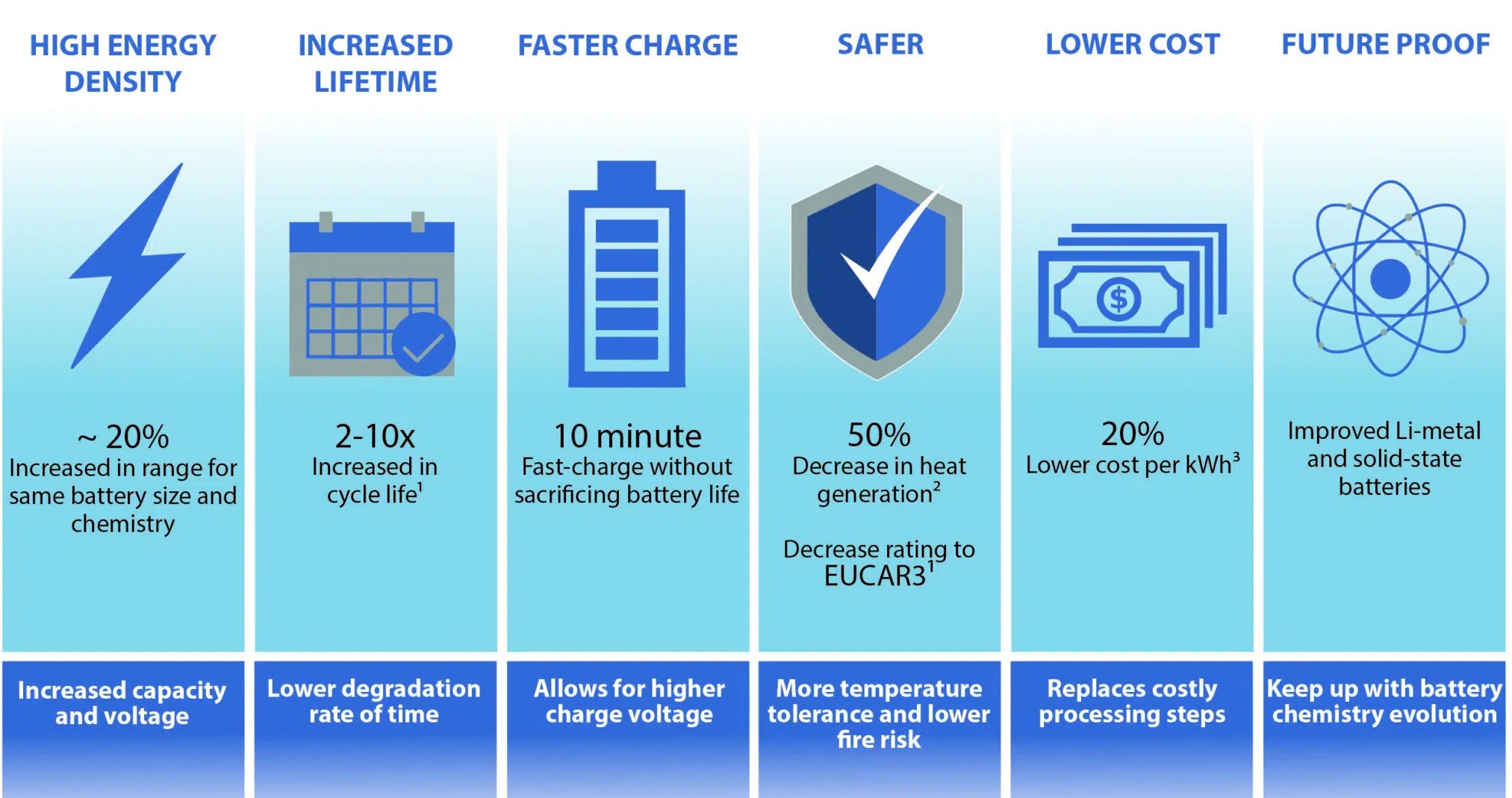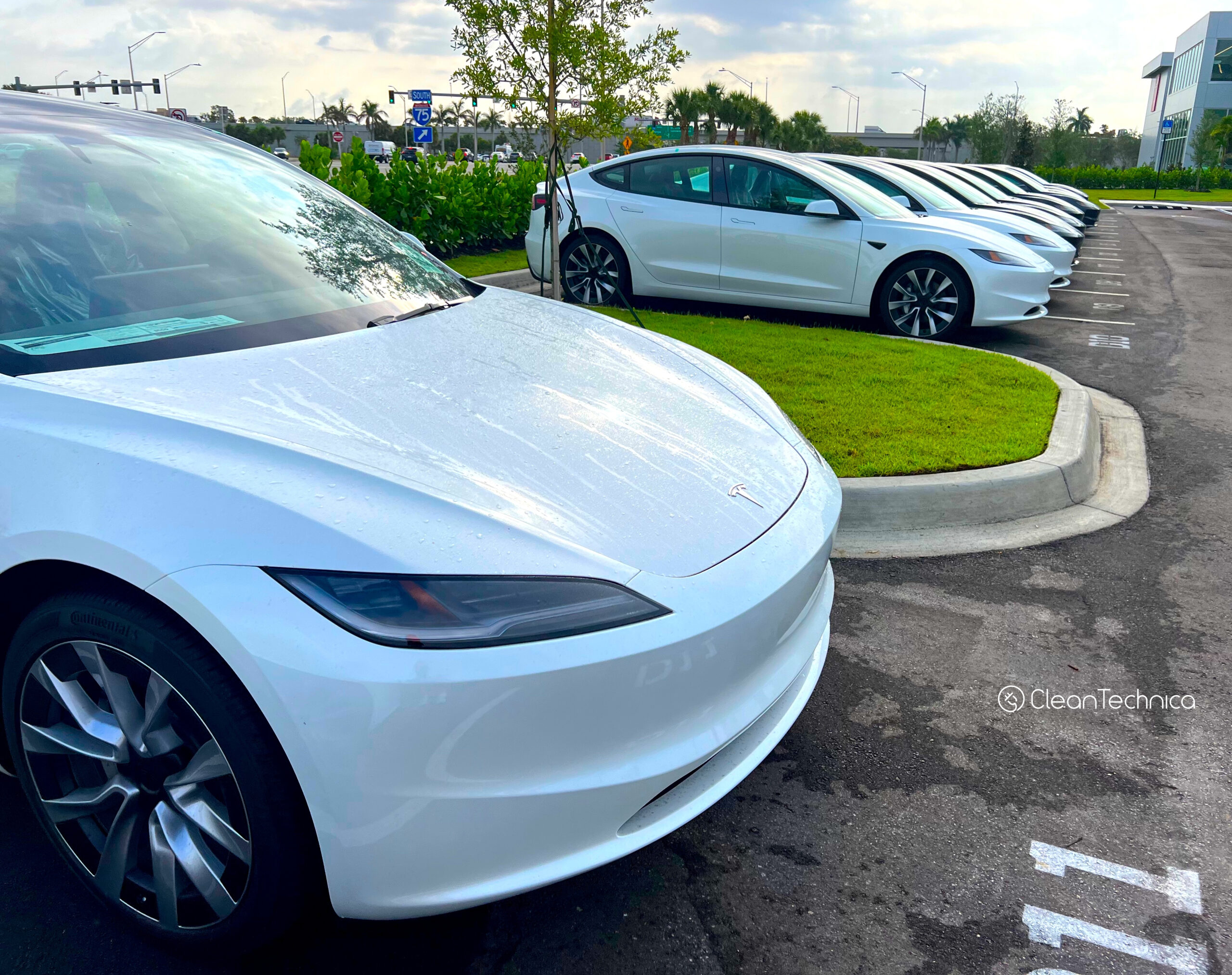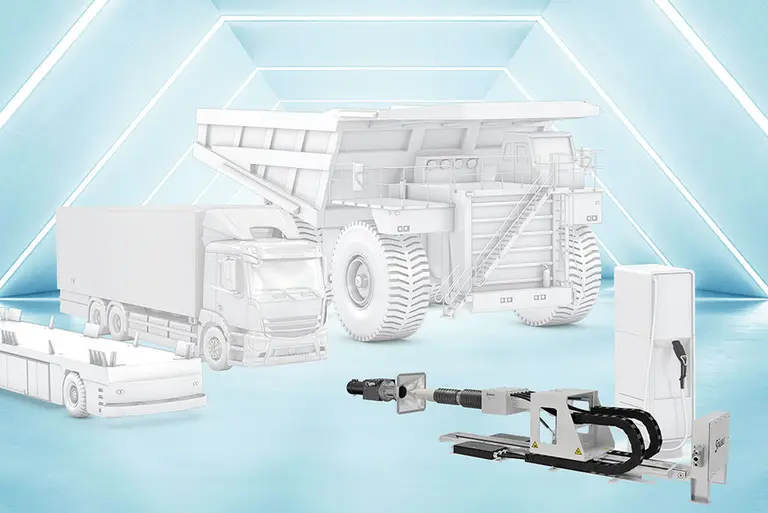Sign up for daily news updates from CleanTechnica on email. Or follow us on Google News!
GM sent the Intertubes spinning last week when the company let word slip about retiring its much-publicized Ultium EV battery branding. GM is expanding its focus on electric vehicles, though, and a new strategic partnership with the California startup Forge Nano indicates that the company has ambitious plans to pursue lower-costing, higher-performing batteries alongside a branding refresher.
Good-Bye Ulitium EV Battery Branding, We Hardly Knew Ye
Bloomberg reporter David Welch scooped the Ultium EV battery news on October 7, noting that the “Ultium” name was introduced to great fanfare just four years ago (see more Ultium battery background here).
Welch also indicated that the branding change is part of “a broad strategic shift led by a new battery boss,” that being former Tesla executive Kurt Kelty. Described by some as Tesla’s “battery guru,” Kelty began working on lithium-ion batteries for Panasonic in 1993 before moving on to Tesla.
In February of this year, GM tapped Kelty for the role of Vice President of Batteries, reporting directly to GM President Mark Reuss. “In this newly created role, Kelty will be charged with GM’s battery cell strategy and a new end-to-end approach,” GM noted in a press statement.
“Kelty plans to lay out GM’s new approach to batteries at its investor day presentation on Tuesday, including a plan to use different types of chemistry, a variety of shapes of cells and different ways to package them for its EVs,” Welch noted last week, adding that Kelty also has some cost-cutting plans in the works.

GM And The EV Battery Materials Connection
For the record, Kelty is not among the rash of recent departures from Tesla. He left during an earlier rash of management turnover back in 2017, after an 11-year run at the company.
Why he left is a matter of speculation, but where he went is not. As of 2019, Kelty was handling the chores of Vice President of Commercialization and Battery Engineering at Sila Nanotechnologies, where he shepherded the company’s silicon-based anode into the market.
“Lithium-ion is currently the most efficient battery technology available, but the materials used have largely remained unchanged, which has led to in the last five years delivering only 1-2% improvements at a time when new features and capabilities require more battery power to run,” Kelty explained to CleanTechnica’s Jake Richardson in an interview back in 2019.
Under Kelty’s purview, Sila introduced its “Titan Silicon” silicon composite to the EV battery market in 2021, billing it as a range increaser, performance enhancer, and charging time reducer. “Titan Silicon generates substantially less CO2 per kWh than graphite during production and is U.S. manufactured, enabling automakers to meet requirements for the Inflation Reduction Act tax credits,” the company also notes.
A Fresh Start For The GM Batteries Of The Future
Kelty’s interest in nano-tailored EV battery materials is also evident in GM’s newly announced relationship with Forge Nano, consisting of a $10 million investment from the automaker’s GM Ventures branch along with a formal collaboration between GM and Forge with an eye on applying atomic layer deposition to EV batteries.
“Atomic layer deposition is a surface engineering technique that applies thin-film coatings to battery materials to control chemistry and structure at atomic scale,” Forge Nano explained in a press release earlier today.
“Forge Nano’s Atomic Armor technology has game-changing potential for our battery materials,” observed GM Managing Director Anirvan Coomer.
“They have already demonstrated the ability to expand cathode capabilities, which is the most expensive battery cell component. This could unlock benefits for both customers and the business,” Coomer added.
Driving Down The Cost Of EV Batteries
If this is beginning to ring some bells, you may be thinking of Forge Battery, a branch of Forge Nano.
In July, Forge Battery surfaced on the CleanTechnica radar when the company recapped its plans for deploying atomic layer deposition (ALD) in its new EV battery factory, expected to start operations in 2026 with the anticipation of a 20% drop in manufacturing costs.
“Conventional, widely used coating processes are based on physical or chemical vapor deposition. ALD allows for more precision and lower expenses, partly by eliminating the costly additives needed for conventional deposition,” CleanTechnica noted.
Forge Nano has also noted that EV batteries made with the ALD coating process can last for at least 20 years and are more amenable to recycling than batteries made with conventional manufacturing techniques, in addition to all the other benefits, including a 20% increase in range, 10-minute fast charging, and a 20% cut in costs per kilowatt-hour.
What Comes After Ultium?
It remains to be seen if the GM-Forge partnership yields better branding along with better batteries. They could take a cue from Forge Battery, which is marketing its first commercial ALD-enabled EV battery under the name Supercell. Forge Nano isn’t too shabby, either. The company sells its ALD coating for EV batteries as Atomic Armor.
Either way, GM is going to need lithium, and plenty of it according to the company’s plans for expanding its EV lineup. The company has been rushing to nail down lithium supply chains ahead of the competition, the latest example being a new investment agreement and joint venture with the Canadian firm Lithium Americas Corp. to kickstart the Thacker Pass lithium mine in Humboldt County, Nevada.
The arrangement includes $625 million in cash and letters of credit from GM along with a vote of confidence from the US Department of Energy in the form of a $2.3 billion conditional loan commitment. GM describes its stake as the biggest ever “publicly announced investment by a U.S. OEM in a lithium carbonate project,” emphasizing the “strategic importance of Thacker Pass in creating a domestic supply chain for critical minerals.”
That’s the lithium supply side of the story. On the branding side, GM has put its John Hancock on a mining project that has faced an uproar of protest since first approved in 2021.
“Once again, Native leaders confront an extractive industry hungry for resources — with some environmental activists caught between their desires to protect pristine wilderness and move away from fossil fuels,” explained activist and Standing Rock Sioux tribe member Tokata Iron Eyes in a blog post for the Lakota Peoples’ Law Project last year.
On a more positive note, GM has also indicated that the EV battery of the future will enjoy a much less contentious supply chain. Back in 2021, GM was the first investor to put up multiple millions in support of a new geothermal brine lithium extraction system under development by the firm Controlled Thermal Resources.
CRT is one of several US firms working on new lithium extraction systems that leverage geothermal energy to minimize surface disruption. The company broke ground on its Hell’s Kitchen project earlier this year, so stay tuned for more on that.
Follow me via LinkTree, or @tinamcasey on Threads, LinkedIn, and Instagram.
Image: GM is laying plans for the EV battery of the future, including new cost-cutting, performance-enhancing atomic layer deposition technology (courtesy of Forge Nano).

 Chip in a few dollars a month to help support independent cleantech coverage that helps to accelerate the cleantech revolution!
Chip in a few dollars a month to help support independent cleantech coverage that helps to accelerate the cleantech revolution!
Have a tip for CleanTechnica? Want to advertise? Want to suggest a guest for our CleanTech Talk podcast? Contact us here.
CleanTechnica uses affiliate links. See our policy here.
CleanTechnica’s Comment Policy




